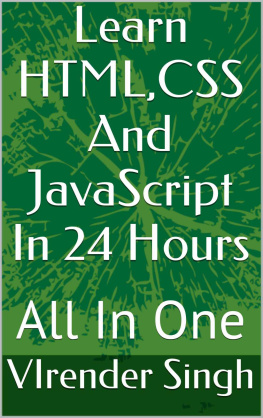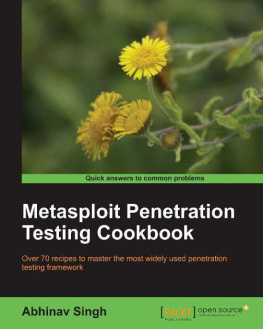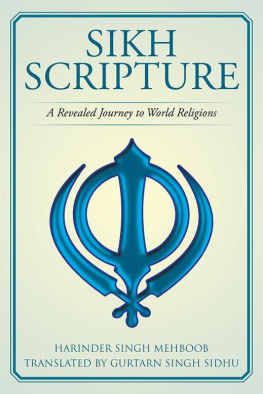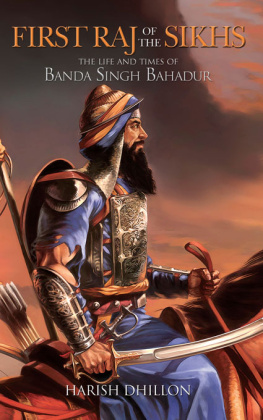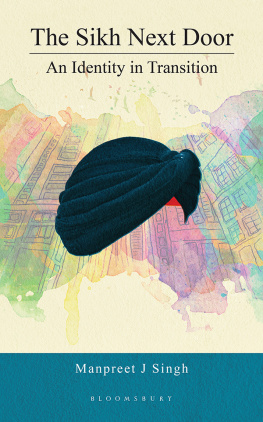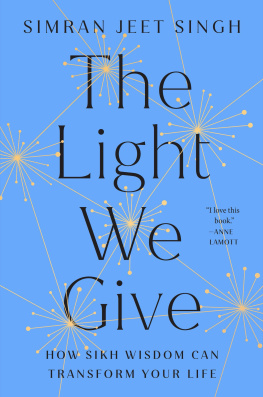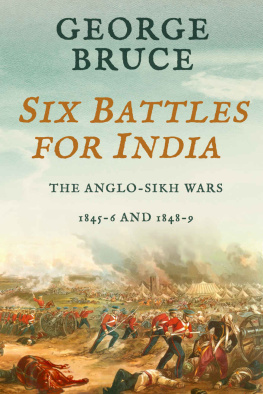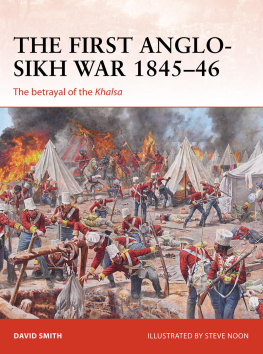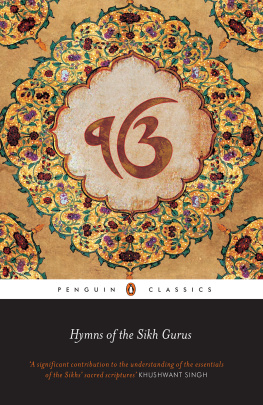Singh - The First Anglo-Sikh War
Here you can read online Singh - The First Anglo-Sikh War full text of the book (entire story) in english for free. Download pdf and epub, get meaning, cover and reviews about this ebook. City: Stroud;Gloucestershire, year: 2014;2013, publisher: Amberley Publishing, genre: Politics. Description of the work, (preface) as well as reviews are available. Best literature library LitArk.com created for fans of good reading and offers a wide selection of genres:
Romance novel
Science fiction
Adventure
Detective
Science
History
Home and family
Prose
Art
Politics
Computer
Non-fiction
Religion
Business
Children
Humor
Choose a favorite category and find really read worthwhile books. Enjoy immersion in the world of imagination, feel the emotions of the characters or learn something new for yourself, make an fascinating discovery.

The First Anglo-Sikh War: summary, description and annotation
We offer to read an annotation, description, summary or preface (depends on what the author of the book "The First Anglo-Sikh War" wrote himself). If you haven't found the necessary information about the book — write in the comments, we will try to find it.
Singh: author's other books
Who wrote The First Anglo-Sikh War? Find out the surname, the name of the author of the book and a list of all author's works by series.
The First Anglo-Sikh War — read online for free the complete book (whole text) full work
Below is the text of the book, divided by pages. System saving the place of the last page read, allows you to conveniently read the book "The First Anglo-Sikh War" online for free, without having to search again every time where you left off. Put a bookmark, and you can go to the page where you finished reading at any time.
Font size:
Interval:
Bookmark:


This electronic edition published 2013
Amberley Publishing
The Hill, Stroud, Gloucestershire
GL5 4EP
www.amberleybooks.com
Copyright Amarpal S. Sidhu 2010, 2013
The right of Amarpal S. Sidhu to be identified as the Author of this work has been asserted in accordance with the Copyrights, Designs and Patents Act 1988.
All rights reserved. No part of this book may be reprinted or reproduced or utilised in any form or by any electronic, mechanical or other means, now known or hereafter invented, including photocopying and recording, or in any information storage or retrieval system, without the permission in writing from the Publishers.
British Library Cataloguing in Publication Data.
A catalogue record for this book is available from the British Library.
ISBN 978-1-84868-983-1 (PRINT)
ISBN 978-1-4456-2038-1 (e-BOOK)
British India c. 1845
Detail of the Theatre of War Punjab
The Battle of Mudki, 18 December 1845
The Battle of Ferozeshah, 21-22 December 1845
The Battle of Bhudowal, 21 January 1846
The Battle of Aliwal, 28 January 1846
The Battle of Sabraon, 10 February 1846
Interest in the memorialisation of battlefields goes back some time, but it was during the nineteenth century that past glories were first marked out on the field of battle sometimes incongruously, sometimes in the wrong place, sometimes marking the wrong dates. Historians left with this legacy have often had to work to understand not only where the battle was fought, but also the background to why the battle was commemorated in the first place.
Over the last decade or so, the new discipline of battlefield archaeology has grown out of a need to reinterpret battlefields, to place them in their correct geographic setting, to understand the events that were played out in past wars, and to consider the level of memorialisation and memory associated with battle sites. Wide ranging in geography and period, battlefield archaeology has moved from Europe and the Americas to Africa and Asia; it has taken in the conflicts of the classical period, considered the wars of empire in the seventeenth and eighteenth centuries, and examined the industrialised conflict of the nineteenth and twentieth centuries. Seemingly, no stone has been left unturned in the quest for knowledge of historical conflicts; and yet, to date, there has been the major omission of a country with a long history of military engagements India. A complex subcontinent geographically, Indian battlefields must surely present historians and archaeologists a rich archive that will reward detailed study.
India was long considered the jewel in the crown of the burgeoning British Empire, a vast territory of millions of people assembled over centuries of military conquest and commercial development during the decades of the East India Company. Standing in the way of further expansion was the Sikh Kingdom of the Punjab, built in large part by the military actions of Maharaja Ranjit Singh against the Afghans from 1799 until his death in 1839. With the death of the Maharaja came the weakening of the Sikh power base, and the potential for the British to subdue their neighbours. It would not be an easy task in a geographically complex terrain against determined opponents.
In his excellent account of the first war between the British East India Company and the Sikh Kingdom in 1845-6, Amarpal Sidhu provides the framework for understanding the conflict, its origins, implications and actions; it also provides the basis for the future exploration, study and commemoration of battles that have long been overlooked in the memory of many in the west. With this book in hand, the battlefields of the Punjab come alive once again.
Professor Peter Doyle BSc PhD Cgeol FGS
Battlefield Archaeologist
Co-Secretary, All Party War Graves and Battlefield Heritage Group
Sir, I think it my duty earnestly to recommend our retreating to Ferozepore.
British Army major, Ferozeshah
Never! Id rather die on the spot.
Sir Hugh Gough, Commander-in-Chief, British Army in India
The middle of the nineteenth century saw the first serious challenge to the European military predominance that had been firmly established since the decline of the Ottoman Empire two hundred years earlier. By the turn of that century, a new empire had been established on the plains of the Punjab in northern India by Ranjit Singh, ruler of the Sikhs. With British expansion moving northwards towards his domain during the centurys early decades, Ranjit had orchestrated in response a rapid change in the Sikh army to face this threat; first importing and imitating western military tactics and weapons, then developing his own, he developed the first modern army in Asia. Six years after his death, the inevitable trial of strength between the two powers on a freezing December night by the nondescript village of Ferozeshah would result in one of the most memorable and dramatic battles in history.
The contest had commenced in the afternoon of that day in 1845, the British army marching out of their base a short distance away to attack the Sikh camp. Bivouac equipment was left behind as the British commander Sir Hugh Gough expected to return the same day after a glorious victory. However, the struggle with the Sikh army turned into a long and vicious battle of attrition extending late into the night with initial British success overturned by Sikh counterattacks as darkness descended on the now burning village. The British force, badly weakened, had split in two with the left wing retreating to a village three kilometres away while the other battered remnants of the army had been forced southwards out of the Sikh camp and into a defensive formation. With their retreat, a relative lull had fallen over the field of battle for the night, prior to the resumption of hostilities at sunrise. The British commander-in-chief now found himself in a most perilous position. Ammunition had been exhausted while thinly clad British soldiers found it impossible to rest without food and water in the subzero temperatures. What had been mooted as a triumphant advance into the Sikh capital of Lahore with only moderate difficulty had turned into a most desperate struggle for the survival of the British Empire in India.
My interest in the subject of the Anglo-Sikh Wars grew several years ago when I researched some firsthand accounts of the battle. The military history of the British East India Company since the Battle of Plassey, a hundred years earlier, had been invariably one of a small, disciplined and well-equipped European army, backed by native sepoys, comfortably gaining victories over more numerous but less organised forces across the subcontinent. The Battle of Ferozeshah was different. Eyewitness accounts written by both British soldiers and officers provide us with graphic descriptions of the privations and hardships suffered during the punishing two-day struggle.
Ferozeshah, Sabraon, Chillianwala and the other battles fought against the British have a powerful hold on the Punjabi people as well. They still have a strong sense of pride in the Sikh army that was welded together by Ranjit Singh. The victory that was declined at Ferozeshah and the duplicity of the Sikh commanders towards their army is a popular subject of discussion across the towns and villages of Punjab. This interest has been translated into numerous books on the wars. Unfortunately, this interest does not as yet extend to the battlefield sites. There are no modern memorials to these great battles. Road maps do not mark these sites as places of interest. There are no signs on highways alerting passersby to the close proximity of these battlefields and no guide books are available. Those books that are available tend to be narratives of the campaign, inadequate to the task of explaining the battlefields. The sketches detailing the battles are just that, hurriedly drawn maps by combatants writing of their experiences after the battle. While invaluable, these maps cover only the most salient points of the battlefield and they miss much of the finer detail provided in written accounts. Just as critically, they lack the changes that the last one hundred and fifty years have wrought on these sites. Over time, new villages have sprung up, new roads and canals now pass through the sites, and other landmarks have appeared or disappeared. Consequently, few visitors walk the banks of the Sutlej at Aliwal or through the fields of Ferozeshah. The area of the Sikh entrenchments at Sabraon, close to the River Sutlej, scene of a great tragedy where thousands of Sikh soldiers died, is a particularly lonely place, frequented only by the occasional farmer or shepherd. Only the British monuments built nearly a century and a half ago alert the passerby of the military significance of these sites. The monuments themselves are quietly crumbling away, victims of the official neglect faced by every ageing structure in the subcontinent. The original plaques on the monuments that boldly declared the names of Mudki, Ferozeshah, Aliwal and Sabraon have long since vanished. In fact, so little is apparent to the uneducated eye that casual visitors would be discouraged from carrying out more than a cursory examination of these sites.
Font size:
Interval:
Bookmark:
Similar books «The First Anglo-Sikh War»
Look at similar books to The First Anglo-Sikh War. We have selected literature similar in name and meaning in the hope of providing readers with more options to find new, interesting, not yet read works.
Discussion, reviews of the book The First Anglo-Sikh War and just readers' own opinions. Leave your comments, write what you think about the work, its meaning or the main characters. Specify what exactly you liked and what you didn't like, and why you think so.



